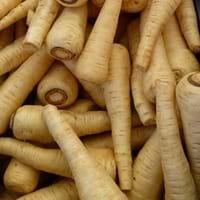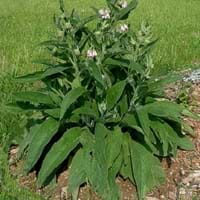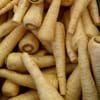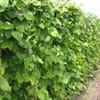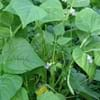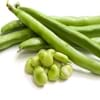Life Span
Biennial and Perennial
Perennial
Type
Vegetable
Broadleaf Evergreen
Origin
Europe, Western Asia
Europe, Russia
Types
Not Available
Symphytum officinale (common comfrey), Symphytum asperum (rough comfrey)
Number of Varieties
Not Available
Habitat
waste ground, wastelands
Cold Regions, stream banks
USDA Hardiness Zone
4-9
6-11
AHS Heat Zone
7-1
Not Available
Sunset Zone
A1, A2, A3, H1, H2, 1a, 1b, 2a, 2b, 3a, 3b, 4, 5, 6, 7, 8, 9, 10, 11, 12, 13, 14, 15, 16, 17, 18, 19, 20, 21, 22, 23, 24
21,22
Habit
Rosette/Stemless
Upright/Erect
Flower Color
Yellow
White, Light Pink
Flower Color Modifier
Bicolor
Bicolor
Fruit Color
Brown, Black
Not Available, Orange Red
Leaf Color in Spring
Green
Red, Green, Copper
Leaf Color in Summer
Green
Green, Blue Green
Leaf Color in Fall
Green
Green, Blue Green
Leaf Color in Winter
Not Available
Red, Dark Green, Burgundy, Bronze
Plant Season
Summer
Spring, Summer, Fall, Winter
Sunlight
Full Sun
Full Sun, Partial Sun, Partial shade
Growth Rate
Medium
Medium
Type of Soil
Loam
Loam, Sand
The pH of Soil
Neutral
Acidic, Neutral
Soil Drainage
Well drained
Well drained
Bloom Time
Summer
Late Spring, Early Summer, Summer
Tolerances
Drought
Not Available
Where to Plant?
Ground, Pot
Container, Ground
How to Plant?
Seedlings
Root Division, Transplanting
Plant Maintenance
Medium
Low
Watering Requirements
Average Water Needs, Do Not over Water, Keep the ground moist but not water-logged
Allow to dry out slightly between watering, Water daily during growing season
In Summer
Lots of watering
Lots of watering
In Spring
Moderate
Moderate
In Winter
Average Water
Average Water
Soil pH
Neutral
Acidic, Neutral
Soil Type
Loam
Loam, Sand
Soil Drainage Capacity
Well drained
Well drained
Sun Exposure
Full Sun
Full Sun, Partial Sun, Partial shade
Pruning
Remove damaged leaves, Remove dead branches, Remove dead leaves
Cut or pinch the stems, Remove dead leaves
Fertilizers
All-Purpose Liquid Fertilizer
14-14-14 Fertilizer, All-Purpose Liquid Fertilizer, can go long without fertilizers
Pests and Diseases
Aphids, Armyworm, Cutworms, Downy mildew, Pitch canker, Red blotch
Aphids, Stem spot
Plant Tolerance
Drought
Shallow soil, Sun
Flower Petal Number
Not Available
Single
Fragrant Bark/Stem
Yes
No
Foliage Texture
Fine
Medium
Foliage Sheen
Matte
Glossy
Attracts
Butterflies
Ants, Butterflies, pollinators
Allergy
Stomach burn
Antibacterial, Peripheral Edema
Aesthetic Uses
Not Available
Cottage Garden, Showy Purposes
Beauty Benefits
Blood purifying, Good for skin
Acne, Beautiful Skin, Reduce Bruises, Remove blemishes
Environmental Uses
Air purification
Air purification, Fixes Nitrogen
Medicinal Uses
Aphrodisiac
Asthma, Diarrhea, Obesity, Osteoarthritis
Part of Plant Used
Root
Leaves, Twigs
Other Uses
Food for animals, Used as a nutritious food item
Used for its medicinal properties
Used As Indoor Plant
Yes
No
Used As Outdoor Plant
Yes
Yes
Garden Design
Edible, Herb, Vegetable
Container, Feature Plant, Foundation, Groundcover, Hedges, Mixed Border, Tropical
Botanical Name
PASTINACA sativa
Symphytum asperum
Common Name
Parsnip
Comfrey,Black Root, Blackwort, Bruisewort
In Hindi
चुकंदर
Blackwort
In German
Pastinake
Blackwort
In French
Panais
Blackwort
In Spanish
Chirivía
Blackwort
In Greek
Είδος δαυκίου
Blackwort
In Portuguese
cherivia
Blackwort
In Polish
Pasternak
Blackwort
In Latin
parsnip
Blackwort
Phylum
Magnoliophyta
Magnoliophyta
Class
Magnoliopsida
Magnoliopsida
Family
Apiaceae
Boraginaceae
Clade
Angiosperms, Asterids, Eudicots
Angiosperms, Eudicots, Rosids
Tribe
Not Available
Not Available
Subfamily
Not Available
Boraginoideae
Number of Species
Not Available
Not Available
Importance of Parsnip and Comfrey
Want to have the most appropriate plant for your garden? You might want to know the importance of Parsnip and Comfrey. Basically, these two plants vary in many aspects. Compare Parsnip and Comfrey as they differ in many characteristics such as their life, care, benefits, facts, etc. Every gardener must at least have the slightest clue about the plants he wants to plant in his garden. Compare their benefits, which differ in many ways like facts and uses. The medicinal use of Parsnip is Aphrodisiac whereas of Comfrey is Asthma, Diarrhea, Obesity and Osteoarthritis. Parsnip has beauty benefits as follows: Blood purifying and Good for skin while Comfrey has beauty benefits as follows: Blood purifying and Good for skin.
Compare Facts of Parsnip vs Comfrey
How to choose the best garden plant for your garden depending upon its facts? Here garden plant comparison will help you to solve this query. Compare the facts of Parsnip vs Comfrey and know which one to choose. As garden plants have benefits and other uses, allergy is also a major drawback of plants for some people. Allergic reactions of Parsnip are Stomach burn whereas of Comfrey have Antibacterial and Peripheral Edema respectively. Having a fruit bearing plant in your garden can be a plus point of your garden. Parsnip has no showy fruits and Comfrey has showy fruits. Also Parsnip is not flowering and Comfrey is not flowering . You can compare Parsnip and Comfrey facts and facts of other plants too.
